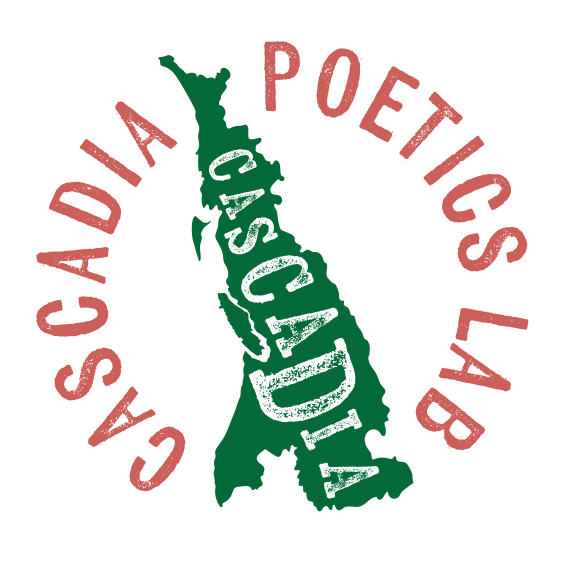Writing or Rewriting
(Originally published as a post from July 12, 2013.)
I was fascinated to see a post from one of my Facebook friends, Jim Andrews, linking to a piece in the Boston Globe about how the practice of extensive revision of one’s writing is a 20th Century and largely Modernist development. Craig Fehrman is the author of said article and his prime source is Hannah Sullivan. Here’s a sample:
It’s easy to assume that history’s greatest authors have been history’s greatest revisers. But that wasn’t always how it worked. Until about a century ago, according to various biographers and critics, literature proceeded through handwritten manuscripts that underwent mostly small-scale revisions. Then something changed. In a new book, “The Work of Revision,” Hannah Sullivan, an English professor at Oxford University, argues that revision as we now understand it—where authors, before they publish anything, will spend weeks tearing it down and putting it back together again—is a creation of the 20th century. It was only under Modernist luminaries like Ezra Pound, T.S. Eliot, and Virginia Woolf that the practice came to seem truly essential to creating good literature. Those authors, Sullivan writes, were the first who “revised overtly, passionately, and at many points in the lifespan of their texts…” Sullivan…, who belongs to a new wave of scholars trying to understand literature through the physical and historical realities of its creation, finds that our value of revision was also driven by something else: the typewriter… “The Work of Revision” makes a case that what we write often comes down to how we write. Careful revision isn’t automatic or even automatically useful. And that means, as our technology changes once again, that literary style may already be undergoing another transformation…
With this in mind, I want to re-state some points I believe to be salient about the notion that extensive revision is a sign of failure in the writing process and perhaps add some new understanding regarding the “minority view” of how to get it right (or even mostly right) in the 1st sitting. This is not an exhaustive list, but a few favorites that have been of use to me in developing an organic approach to writing poetry. I will say that I am firmly in the camp of the Organic, which is the description that Denise Levertov and Robert Duncan used for their poetics in their early 60s correspondence.
A timeline:

Smith Tower
1886: Founding of Smith Premier Typewriting Company
(which would become Smith Corona). The first typewriter was created in a gun factory in Syracuse, New York because, according to Wikipedia: “The parts of a typewriter are surprisingly similar to those of a shotgun “so producing the typewriter at the gun factory was logical and easy.” Their legacy in Seattle, besides typewriters, is the Smith Tower, with elevators still operated manually.
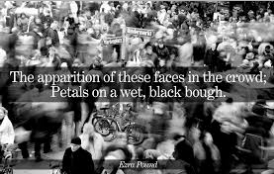
Ezra Pound
1912: The birth of Modernism.
Ezra Pound has the experience in Paris that would lead to the 1913 publication in Poetry magazine of: “In a Station of the Metro.” Imagism, a huge component of modernism in poetry, was created by this moment.
1922 – Duino Elegies (Rainier Maria Rilke).
Started ten years earlier, once World War I was over (& with it Rilke’s depression over it) he was able to finish off his most famous work writing quickly in a pace he described in a 1922 letter as a “boundless storm, a hurricane of the spirit.”
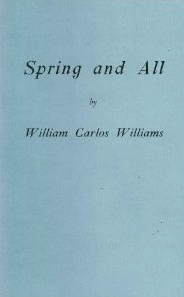
Spring and All
1923 – Spring and All.
William Carlos Williams bucks the going trend in Modernism with (ironically) the release of this Modernist classic. Note passages like: “To perfect the ability to record at the moment when the consciousness is enlarged by the sympathies and the unity of understanding which the imagination gives, to practice skill in recording the force moving, then to know it, the largeness of its proportions” (48). Williams would develop a process that had a lot in common with the organic, publish a huge hunk of Projective Verse in his autobiography and write the introduction to AG’s Howl.
1925 – Yeats: A Vision.
Poems dictated by spirits. A pre-cursor to Jack Spicer’s notion of “dictation.”
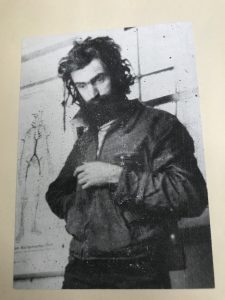
Glen Coffield the First Hippie
1944 – Glen Coffield
– A conscientious objector in WWII stationed at CPS#56 near Waldport, Oregon (the “first hippie”) and he said he was interested in art as a “crystallizing principle for determining which objects and situations are worth being concerned about..” (The Horned Moon, UntidePress, Waldport OR, 1944.)
1950 – Projective Verse.
Charles Olson, oft credited for being the first to use the term Post-Modern to describe literature, (see this) gets more to the core of writing in such a way as to avoid re-writing. From the essay: “ONE PERCEPTION MUST IMMEDIATELY AND DIRECTLY LEAD TO A FURTHER PERCEPTION… keep moving, keep in, speed, the nerves, their speed, the perceptions, theirs, the acts, the split second acts, the whole business, keep it moving as fast as you can, citizen…”(240). Also of note is Olsons suggestion that a poetics is linked to a cosmology: “what stance toward reality brings such verse into being, what that stance does, both to the poet and to his reader” (239). That, according to Olson, this act is about listening suggests the inability to listen or concentrate is at the core of the failed writing experience, resulting in the need to revise extensively. Olson also was clear in the essay that the typewriter was a tool to provide exactness in reproducing the poem aurally, likening the poem on the page to a musical score.
1963 – Letters of Duncan and Levertov.
It’s in a May 1963 letter to Denise Levertov that Robert Duncan describes the differences between a Conventional poet (a formalist), a Free Verse poet (he cites Ginsberg’s Howl as such a poem) and the Organic poet. He would be speaking of the poetry he and Levertov were writing and suggested that underlying the motivation of the Organic poet was the understanding that: “the universe and man are members of a form. Our freedom lies in our apprehension of this underlying form” (405). The correspondence of these two literary giants is a wealth of information about prevision, or the act of getting it right the first time. Duncan would have a great deal more to say about prevision and his comment that he did not use language, but “cooperated with it” is indicative of the stance of someone writing in this manner.
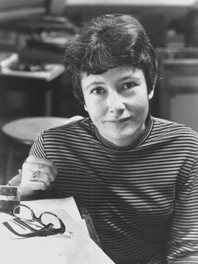
Denise Levertov
1965 – Some Notes on Organic Form (Levertov).
The best essay on this stance toward poem-making since Projective Verse. In this essay Levertov expounds on Olson and Duncan’s concepts, saying: “…there is a form in all things (and in our experience) which the poet can discover and reveal” (67). She goes on to give a partial definition of organic poetry saying it: “…might be that it is a method of apperception… such poetry is exploratory” (68). Later that year (1965) in an interview conducted by Walter Sutton, she would elaborate on that notion of scrupulous listening that Olson said was essential to prevision. The question was What do you mean by the inner voice?
“What it means to me is that a poet, a verbal kind of person, is constantly talking to himself, inside of himself, constantly approximating and evaluating and trying to grasp his experience in words. And the “sound,” inside his head, of that voice is not necessarily identical with his literal speaking voice, nor is his inner vocabulary identical with that which he uses in conversation. At their best sounds and words are song, not speech. The written poem is then a record of that inner song” (92).
See also her notes “On The Function of the Line” in 1979, which elaborate further on the topic, as well as her notion that if the poem needs extensive revision, it was not ready; did not incubate enough, which is likely the most accurate thing said on this topic.
1965 – Spicer’s Vancouver Lectures.
This event has become legendary in outrider North American poetry circles, and beyond, no doubt. A key line was a direct response to Olson: “It isn’t simply the matter of being able to get a fast take. It’s something else – but the fast take is a good sign that you’re hooked up with some source of power, some source of energy” (274). And later he says that the effort to get it right in the first take is based in part on the ability to “clear the mind away from itself” (275).
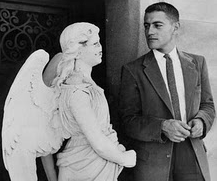
Robin Blaser and a terrible angel
1975 – The Practice of Outside, Robin Blaser.
Blaser was ostensibly breaking down his friend Spicer’s poetics, but he goes beyond where Spicer did and gives us jewels into the notion of dictation.
“There is here an experience of dictation, now open to all of us, beginning where the manhood leaves off – at the open end of what we are. This is, I think, a beloved that may begin in sexuality, but it will end in the world – a vocabulary for it, a task, and a chemical necessity. The dictation or emptying out allows the unknown, as it is experientially and technically present to what we know, to enter and use the words, where it has been all along – strangely. The dictation resides… in the heart. It is as if the old mythologies were right that said the mind resided in the heart because it is so tied to speech and breath. An opening of the mouth. It is also true that the heart will unwind off the spool. That is part of our openness and our invisibility” (310).

George Bowering
1985 – TISH/Bowering, Wah, Marlatt –
The TISH magazine and subsequent movement of writers associated with the magazine in Vancouver was an early 60s phenomenon (the movie The Line Has Shattered gives a glimpse into the seminal event of that scene), it was in 1985 that George Bowering published Craft Slices a book of short essays, many of which give a glimpse into the prevision process that Bowering has come to master. Going back to the early days of TISH, Bowering quotes the 21 year old Fred Wah as saying:
“Here is the poem as energy-preserving object. It must preserve the instants of the poet’s own dance with his environment – the melodies, rhythms and structures found in unique contact with environment and response. I make the case for consonants as beats and the vowels carrying that mellismatic colour – our language is that real that it does have tones – essentially collisions of sound” (32)
Bowering elaborates in many places in the book. On that same page he cites Duncan as their source of their notion of “poetry- writing as a task, not as an accomplishment, not finding our own voices, as the creative writing teachers had it, but serving an order other and larger than ourselves.” He later states about the that the best poets of contemporary Canada
“are agreed that the poet must not fancy himself so much as to abrogate a power over language, language their elder and their better. Like children again, they know enough to be seen and not heard, to let language, which knows so much more than they do, speak” (140).
One other great Bowering quote on his stance toward poem making I have quoted often and is linked here.
1995 – Michael McClure Three Poems.
In his Author’s Preface to this book, McClure states:
“To write spontaneously does not mean to write carelessly or without thought and deep experience. In fact, there must be a vision and a poetics that are alive and conscious… The moment of writing is complex and at the same time it is natural and vigorous. I do not know of a more adventurous gesture than to write spontaneously” (xv).

Eileen Myles
2002 – Eileen Myles.
Interviewed in 2002, she compared her practice (with its similarity to The Practice of Outside) with the prevailing school of poetry. She said: “The thing is I feel if you’re so busy constructing the present correctly, you never have time to get to the future. Whereas if you’re dropping things wildly because you’re in a rush to be here, then you often run ahead of yourself.” She believes the poem “beats you down the street” when you are not necessarily aware of the meaning of everything you write, but learn to trust an intuition, perhaps based on sound or other factors, that the chosen words are correct, decisions which are often validated years after the poem is written; hence, the poem has the potential to be prophetic. (See also her 2015 New Republic interview:
There is still a lot of power built up around mainstream poetry. People are afraid to give America anything but comfort. It’s like an ad for guilt. Even poetry is supposed to support it. Last year I was a judge on the National Book Award’s poetry panel and I felt there was a weird regard for readability which struck me as a kind of a regard for normality, the regular stuff. And we’re living in extraordinary times so our literary culture needs to wake up…)
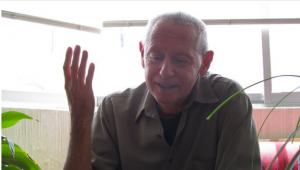
Jose Kozer
2005 – Jose Kozer’s Anima.
In the introduction to his 2011 book of poems translated into Engish, Stet, Kozer is quoted as saying that most of his poems are composed in about 45 minutes. In Anima, the most recent book of poems translated into English, Kozer states:
“These poems are not under the control of any poetic will, they do not know themselves, they proceed from a strong sense of unreality connected to that deep ignorance the author feels before all things – above all, things related to his future” (97).
Near the end of a talk at St. Vincent College, Kozer states that he is no responsible for the content of his poems, as they “are dictated.”
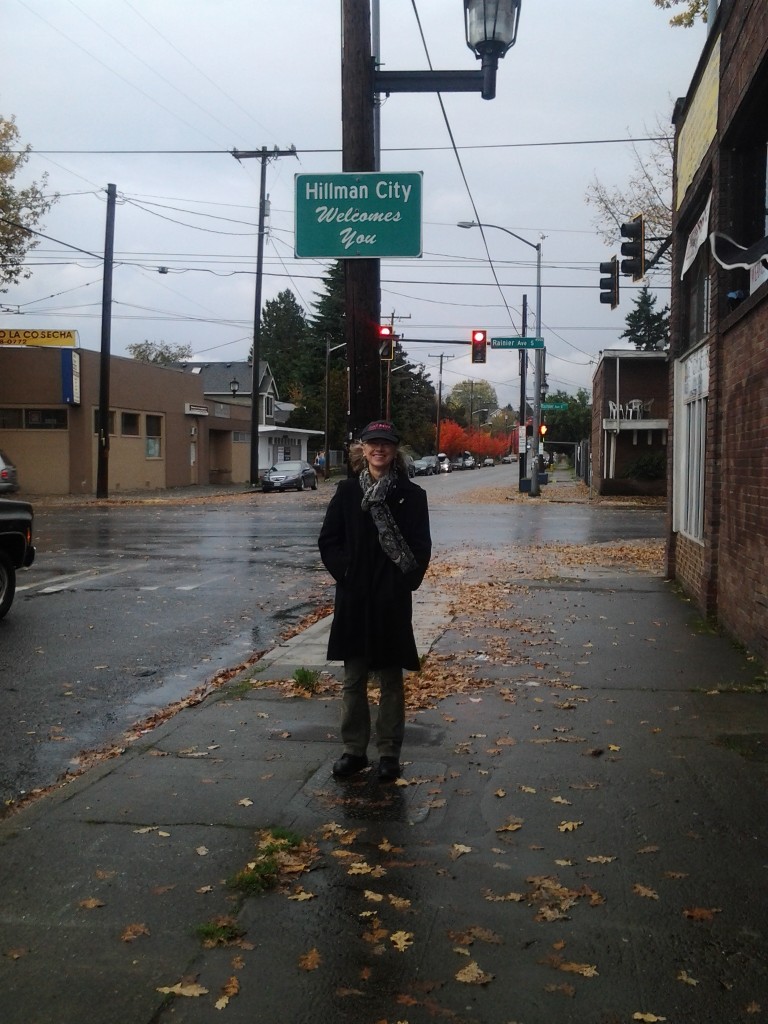
Brenda Hillman, City
2009 Brenda Hillman’s EcoPoetics Minifesto: A Draft for Angie
is relevant:
A–At times a poem might enact qualities brought from Romantic poetry, through Baudelaire, to modernism and beyond–freedom of form, expressiveity, & content–taking these to a radical intensity, with uncertainty, complexity, contradiction;
B–such a poem employs knowledge from diverse disciplines–including scientific vocabularies, but it does not privilege only the human. Research includes rural & urban wilds as well as knowledge from all cultures; creative forms bring together earth & spirit, rejecting no sources, including the personal;
C–its energies shuttle across binaries; realism/non-realism, rationality/irrationality, refuting received authority;
D–such a poem like an animal could graze or hunt in its time, exploring each
word, carrying symbolic rhythms, syntax & images directly between the dream & the myth; the imagination does not reject the spirit world;
E–then a poem is its own action, performing practical miracles:
1. “the miracle of language roots” –to return with lexical adventures
2. “the miracle of perception” –to honor the senses
3. “the miracle of nameless feeling” –to reflect the weight of the subjective, the contours of emotion
4. “the miracle of the social world” –to enter into collective bargaining with the political & the social
F–& though powerless to halt the destruction of bioregions, the poem can be brought away from the computer. The poet can accompany acts of resistance so the planet won’t die of the human.
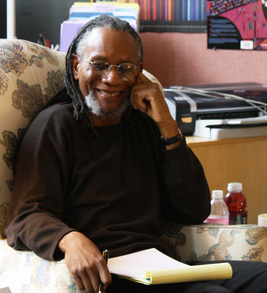
Nate Mackey At SPLAB, 2011
2012 – Nate Mackey and the Serial Poem.
Mackey, who describes his own process as a “slow improvisation” has been tracking the notion of prevision for decades. Like the Jazz musicians of the 50s and 60s who would try another take to get a tune right in a recording session and then leave sometimes several versions of a tune for archivists to find and release years later, Mackey occasionally will publish two different takes on a stanza (or stanzas) in his poetry. In an August 2012 interview published in Amerarcana: A Bird & Beckett Review, Mackey said:
…Certainly the idea of first, second, third, fourth takes applies, but again it’s back to what I said earlier, which is that it gives a sense or it accepts a sense of provisionality, that what you see on page sixty-two was not final, nor is what you see on page sixty-four final. These are two versions that are of something. There is so much that is the same in them that you can see that they are versions of some same thing. The idea that they could be varied, maybe endlessly I think, is there, but it also should shed a certain light or a certain way of looking on the rest of the work, the surrounding work that isn’t repeated in as obvious a form as that. That work too is not definitive in some kind of final way. It too is subject to further takes. In some ways, that’s what serial work is, take after take after take.
Earlier in that same interview, Mackey illuminates his notion of the serial poem as one of the most open approaches to writing poetry when he was asked to explain that form’s appeal:
The fact that things remain open. It’s an open form. The well- wrought urn aesthetic, where the poem is this discrete, self-contained accomplishment in which everything fits together and works together in this well-oiled, machine-like way, imposes a certain sense of closure on each poem that I find constricting and found constricting. I wanted there to be the possibility of things coming into the poem that were not necessarily resolved in that poem, that were not necessarily pursued to their fullest or most exhaustive sense in the poem. I wanted things to come into the poem that would have a life beyond that particular poem and that would become part of an exploration that I’d be involved in in my writing. The appeal of the serial poem is that it allows that. It’s not so much a matter of it’s there and it’s done, but that again and again, again and again, again and again, you come back to certain concerns, certain motifs, certain figures. In a sense, there’s the freedom of not feeling that one has been definitive, that one has closed things up, that one has shut the door on further exploration.

Rivering The Poetry of Daphne Marlatt
2014 – Daphne Marlatt from “Afterword: Immediacies of Writing” (Rivering)
“In its coming into words (the immediate act of composition), a poem will generate a current, a charge as it develops. This current pulls into it material that may simply be flotsam (surface float) or may further the current, twist and merge with it. Writing — not the fingers on the keyboard or the pencil (yes, their rhythms and movements too) so much as listening, listening in the echo chamber language operates in charged thinking. Hearing other / alter(ing) even errant possibilities of connection both phonemic and semantic levels, on memory levels (resonating phrases from others’ work through time, all points of contact in the resonating web of language that is our medium for thought.”
In discussing this post as it evolved over the last couple of days, Sam Hamill was quick to point out that Walt Whitman revised extensively and he predated the typewriter, but one could state the first version of Leaves of Grass is the strongest.
In our era of instant publishing (to the web) and short attention spans (hence the appeal of Twitter) we’re beginning to see the ramifications the computer, the internet and texting are having on writing and poetry, but the jury will be out for a few decades. Yet one still gets the notion that these are radical changes in the way we write and even think, dwarfing the effect the typewriter may have had. That the speed has picked up quite radically, of our culture, of writing (in this age of instant publishing) the notion of getting it right the first time may never have been so important and the minds of many, not just the poets, are revealed for the flaws Pound warned about when he said “More poets fail from lack of character than lack of talent.” It behooves us, as humans, to make our writing like Philip Whalen’s, a “map or graph of the mind moving” and be sure that something interesting and original is going on there.
(See also: https://www.thenation.com/article/angels-radios-rainer-maria-rilke#axzz2ajDaKtVI by Ange Mlinko on a related topic.)
